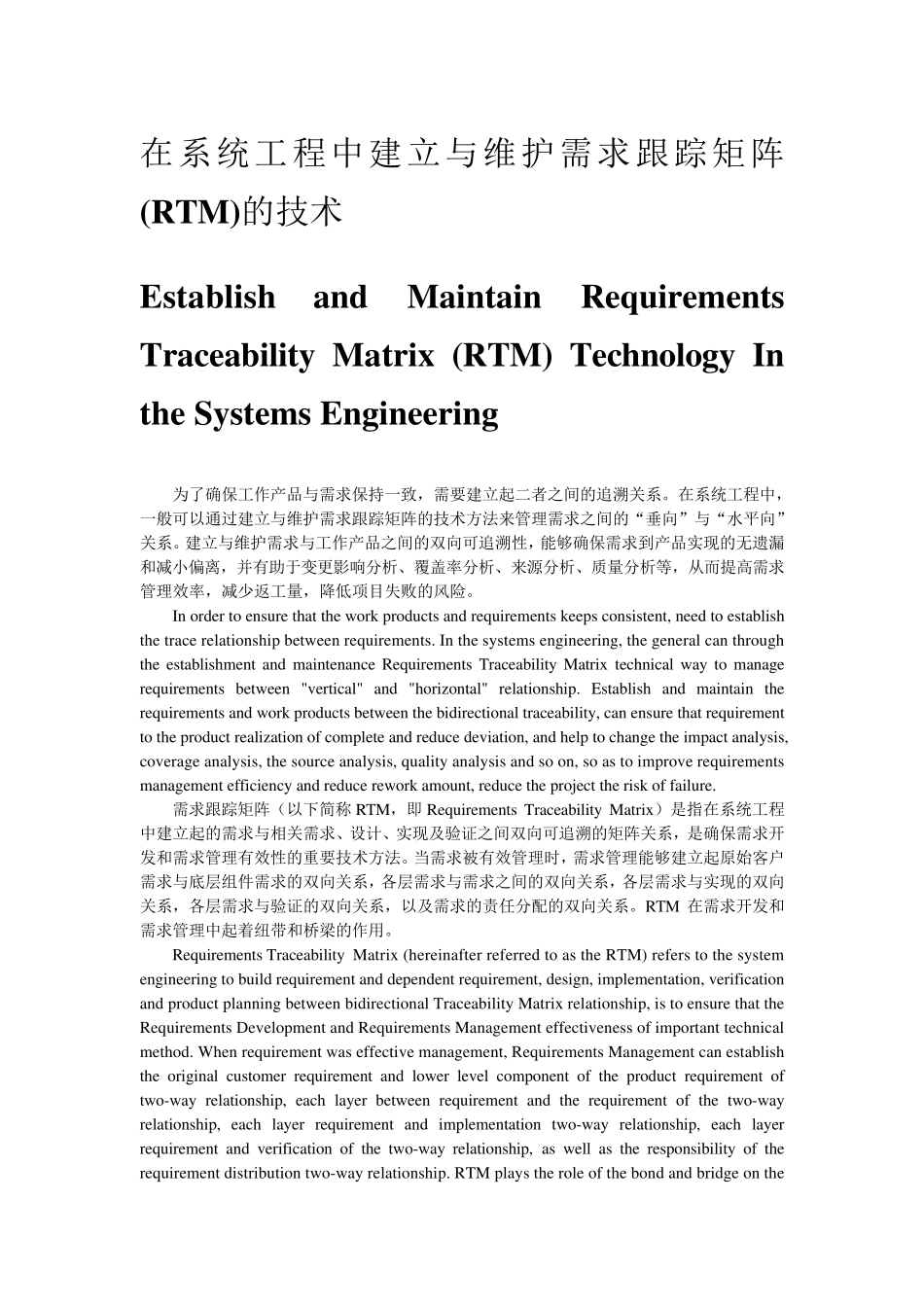在系统工程中建立与维护需求跟踪矩阵(RTM)的技术 Establish and Maintain Requirements Traceability Matrix (RTM) Technology In the Systems Engineering 为了确保工作产品与需求保持一致,需要建立起二者之间的追溯关系。在系统工程中,一般可以通过建立与维护需求跟踪矩阵的技术方法来管理需求之间的“垂向”与“水平向”关系。建立与维护需求与工作产品之间的双向可追溯性,能够确保需求到产品实现的无遗漏和减小偏离,并有助于变更影响分析、覆盖率分析、来源分析、质量分析等,从而提高需求管理效率,减少返工量,降低项目失败的风险。 In order to ensure that the work products and requirements keeps consistent, need to establish the trace relationship between requirements. In the systems engineering, the general can through the establishment and maintenance Requirements Traceability Matrix technical way to manage requirements between "vertical" and "horizontal" relationship. Establish and maintain the requirements and work products between the bidirectional traceability, can ensure that requirement to the product realization of complete and reduce deviation, and help to change the impact analysis, coverage analysis, the source analysis, quality analysis and so on, so as to improve requirements management efficiency and reduce rework amount, reduce the project the risk of failure. 需求跟踪矩阵(以下简称 RTM,即 Requirements Traceability Matrix)是指在系统工程中建立起的需求与相关需求、设计、实现及验证之间双向可追溯的矩阵关系,是确保需求开发和需求管理有效性的重要技术方法。当需求被有效管理时,需求管理能够建立起原始客户需求与底层组件需求的双向关系,各层需求与需求之间的双向关系,各层需求与实现的双向关系,各层需求与验证的双向关系,以及需求的责任分配的双向关系。RTM 在需求开发和需求管理中起着纽带和桥梁的作用。 Requirements Traceability Matrix (hereinafter referred to as the RTM) refers to the system engineering to build requirement and dependent requirement, design,...


